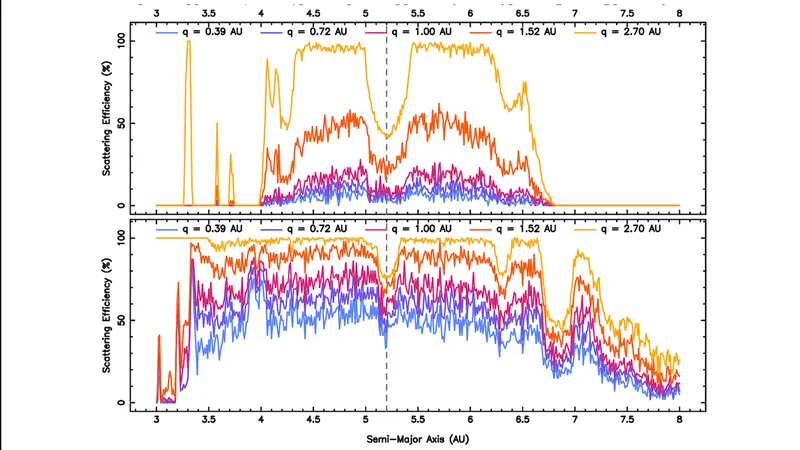
Unlocking the Secrets of Exoplanets: How Cold Giants Shape Habitable Worlds
2025-06-14
Author: Wei Ling
The universe is teeming with diverse exoplanets, each with its own unique orbital architecture. But what does this mean for the potential habitability of these distant worlds?
Recent research reveals that the gravitational forces of giant planets play a pivotal role in shaping the environments of their planetary systems. Their ability to redistribute angular momentum can significantly affect the orbits and tilt of other planets within the system, potentially creating conditions ripe for life.
The Scattering Power of Giant Planets
In a groundbreaking study, scientists conducted dynamical simulations to explore how cold giant planets contribute to the scattering of material toward inner terrestrial planets, especially those located beyond the snow line. This is crucial as these materials could be vital for forming habitable environments.
Focusing on 10 exoplanetary systems with two or more giant planets situated beyond the snow line, researchers adopted a model resembling our Solar System to analyze how material is scattered within the range of 3 to 8 Astronomical Units (AU). Remarkably, when they tweaked the eccentricity of a Jupiter-like planet from nearly circular (its current state) to a moderate range (between 0.2 and 0.3), they observed a tenfold increase in the amount of material reaching the inner parts of the system.
The Importance of Multiple Giants
The addition of a Saturn-like planet to the model further amplified the scattering effect, underscoring the significance of having multiple giant planets in a system. However, introducing Uranus and Neptune analogs showed a minor but notable decrease in scattering efficiency, as they tended to draw angular momentum from the inner giant planets.
Visualizing the Cosmos: System Architectures
The study also detailed the architectural configurations of the 10 planetary systems under investigation. These architectures were ranked by increasing stellar mass, providing a rich visual understanding of how various planets interact and influence each other within their respective systems.
This research not only deepens our understanding of exoplanetary systems but also highlights the delicate balance required for creating habitable worlds. With each discovery, we inch closer to unraveling the mysteries of the cosmos and our place within it.

 Brasil (PT)
Brasil (PT)
 Canada (EN)
Canada (EN)
 Chile (ES)
Chile (ES)
 Česko (CS)
Česko (CS)
 대한민국 (KO)
대한민국 (KO)
 España (ES)
España (ES)
 France (FR)
France (FR)
 Hong Kong (EN)
Hong Kong (EN)
 Italia (IT)
Italia (IT)
 日本 (JA)
日本 (JA)
 Magyarország (HU)
Magyarország (HU)
 Norge (NO)
Norge (NO)
 Polska (PL)
Polska (PL)
 Schweiz (DE)
Schweiz (DE)
 Singapore (EN)
Singapore (EN)
 Sverige (SV)
Sverige (SV)
 Suomi (FI)
Suomi (FI)
 Türkiye (TR)
Türkiye (TR)
 الإمارات العربية المتحدة (AR)
الإمارات العربية المتحدة (AR)